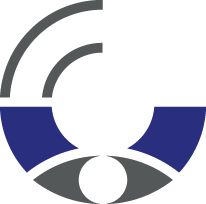
gk222 stands as a name that invites curiosity: is it a project, a protocol, a community, or a brand? In the evolving landscape of digital collaboration and distributed services, gk222 can be understood as a multi-faceted concept that captures trends in decentralization, community-driven governance, and adaptive technological design. This article provides a broad, practical, and conceptual overview of gk222, examining its possible origins, architectural principles, practical applications, governance models, and future potential.
Origins and Context
The label gk222 may originate as an identifier for a development effort, an experimental product, or a community initiative. The cryptic form — a short alphanumeric token — is emblematic of modern projects that foreground concise branding and easy recall. Historically, many such codes begin as internal project names and grow into public-facing entities. Understanding gk222 starts with placing it in context: the acceleration of digital platforms, the rise of open-source collaboration, and the increasing importance of interoperable tools across sectors.
Core Principles
Several principles typically guide initiatives like gk222. First, modularity: systems are built from interchangeable components that can be upgraded or replaced without disrupting the whole. Second, transparency: whether through open-source code, public roadmaps, or clear governance rules, stakeholders can verify actions and propose changes. Third, inclusivity: accessible interfaces and multilingual support broaden participation. Fourth, sustainability: economically and technically viable models ensure longevity. Together, these principles foster resilience and encourage community engagement.
Technical Architecture
At the technical level, a robust gk222-like platform would emphasize interoperability and lightweight protocols. Key components might include:
- API-first design to allow diverse clients and services to integrate seamlessly.
- Modular microservices or plugin architectures to facilitate extension and customization.
- Data portability features so users can export and migrate their information.
- Optional decentralized storage or distributed ledgers for redundancy and auditability, depending on privacy and performance needs.
- Secure authentication mechanisms prioritizing both convenience and protection, such as OAuth flows combined with multi-factor options.

Community and Governance
Community is often the lifeblood of initiatives like gk222. A successful governance approach balances clarity with flexibility, offering pathways for contributors to influence direction while maintaining an operational core team for continuity. Models range from meritocratic open-source stewardship — where active contributors earn decision-making weight — to hybrid structures that combine nonprofit oversight with community councils. Documentation, transparent decision logs, and regular public updates help maintain trust and participation.
Use Cases and Applications

The adaptability of a gk222-style platform means it can serve a wide variety of contexts. Potential use cases include:
- Collaborative knowledge bases that aggregate expertise across organizations while preserving author attribution and revision history.
- Distributed event coordination tools enabling local chapters to plan activities under a common framework.
- Educational platforms that support modular courseware and peer assessment with integrated analytics.
- Small-business ecosystems that provide shared resources — billing, inventory, scheduling — with customizable workflows.
- Citizen science or research platforms allowing volunteers to contribute data, review findings, and co-author results.
Getting Started: Practical Steps
For individuals or organizations interested in adopting or contributing to a gk222-like initiative, a pragmatic roadmap includes:
- Clarify goals: define the primary problems you hope the platform will solve and the target users you intend to serve.
- Assess fit: review existing tools and communities to determine if extending an established project is preferable to starting anew.
- Establish minimum viable infrastructure: prioritize a stable core feature set and clear onboarding documentation.
- Invite early contributors: cultivate a small group of testers and collaborators to iterate rapidly and provide feedback.
- Document governance: create simple, accessible rules for contribution, review, and escalation to build trust from the outset.
Security, Privacy, and Ethical Considerations
Platforms that handle user data or coordinate human activity must treat security and ethics as foundational. Encryption for data in transit and at rest, role-based access controls, and regular security audits are baseline expectations. Privacy-preserving defaults — limiting data collection to what is necessary, expiring data where appropriate, and offering opt-outs — align with user expectations and regulatory requirements. Ethically, designers should consider how platform features might be co-opted and design safeguards to mitigate misuse, biased outcomes, or exclusionary dynamics.
Challenges and Risks
No initiative is without challenges. Common risks for projects like gk222 include governance gridlock if decision-making processes are unclear, fragmentation if forks proliferate without coordination, and sustainability issues if funding models are unstable. Technical debt can accumulate when short-term fixes replace durable solutions, and community burnout is a real concern when volunteers shoulder disproportionate labor. Anticipating these challenges through planning, diversified funding approaches, and healthy contributor practices helps mitigate long-term risk.
Measuring Impact
Evaluating a platform’s success involves qualitative and quantitative measures. Metrics might include user engagement and retention, the diversity of active contributors, the number of interoperable integrations, and tangible outcomes such as completed projects or educational achievements. Qualitative feedback — case studies, participant testimonials, and independent audits — provides context and insight that raw numbers cannot capture. A balanced evaluation framework supports iterative improvement and strategic adaptation.
Future Directions
Looking ahead, initiatives like gk222 will likely evolve along several vectors. Greater emphasis on privacy-first decentralized features may coexist with improved cloud-native services for usability. Interoperability standards could reduce duplication and enable richer ecosystems of complementary tools. Advances in AI and automation can augment human contribution without replacing core community functions, provided ethical guardrails are in place. Finally, hybrid governance models blending local autonomy with global standards may offer the best prospects for both innovation and fairness.
Conclusion
gk222, whether a concrete project or a conceptual archetype, encapsulates contemporary aspirations for collaborative, resilient, and community-centered digital platforms. By prioritizing modular architecture, transparent governance, inclusive design, and ethical stewardship, initiatives in this vein can serve diverse needs across education, business, research, and civic life. For practitioners, the path is iterative: start with clear goals, build a minimal yet robust core, foster community participation, and remain open to learning and adaptation as the ecosystem matures.
